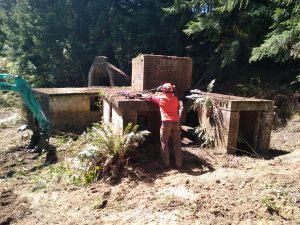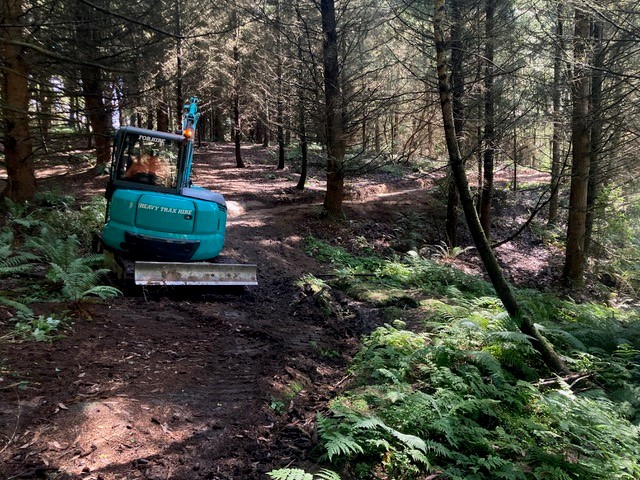Some time ago we were approached by the Kaitangata community to create a walking track to an old fan house.
This came to fruition in February, with the cutting of a benched track and clearing of the vegetation around the fan house itself.
Our track was built by Jesse Shute from Gutsell Forestry (pictured above clearing the track with a digger), under the guidance of our walking track expert Simon Noble of Envisage NZ. It has been built in consultation with the local Kaitangata community, who are going to look after it from now on.
It starts from Needle Street and follows a gentle, slightly benched route for about 500 metres, down to a new boardwalk. It then goes on to an old track formation (from the mining era) for another 150 metres until it reaches the fan house. To return to Needle Street, there is an option of a longer tramping-standard track that goes up and around an old pond through a variety of different tree species. The total loop is about 1.8km.
To meet our health and safety obligations in a working forest, people must have a permit to walk the track. Permits for this track are available through our Forest Access System. Ultimately, permits for this track – and a few others we have been working on – will be available under a special category in this system.

Simon Noble clearing vegetation from the old fan house.
What is a fan house?
Its purpose was to extract large volumes of air from the mine shafts several hundred metres underground, to keep the air safe for the miners working down there. This fan house was built in the early 1900s (just a few hundred metres behind the Kaitangata School) and then enlarged in 1923. As all mining in those days was underground, this is one of the few remaining visible remnants of an industry that employed about 100 people in Kaitangata at its peak.
